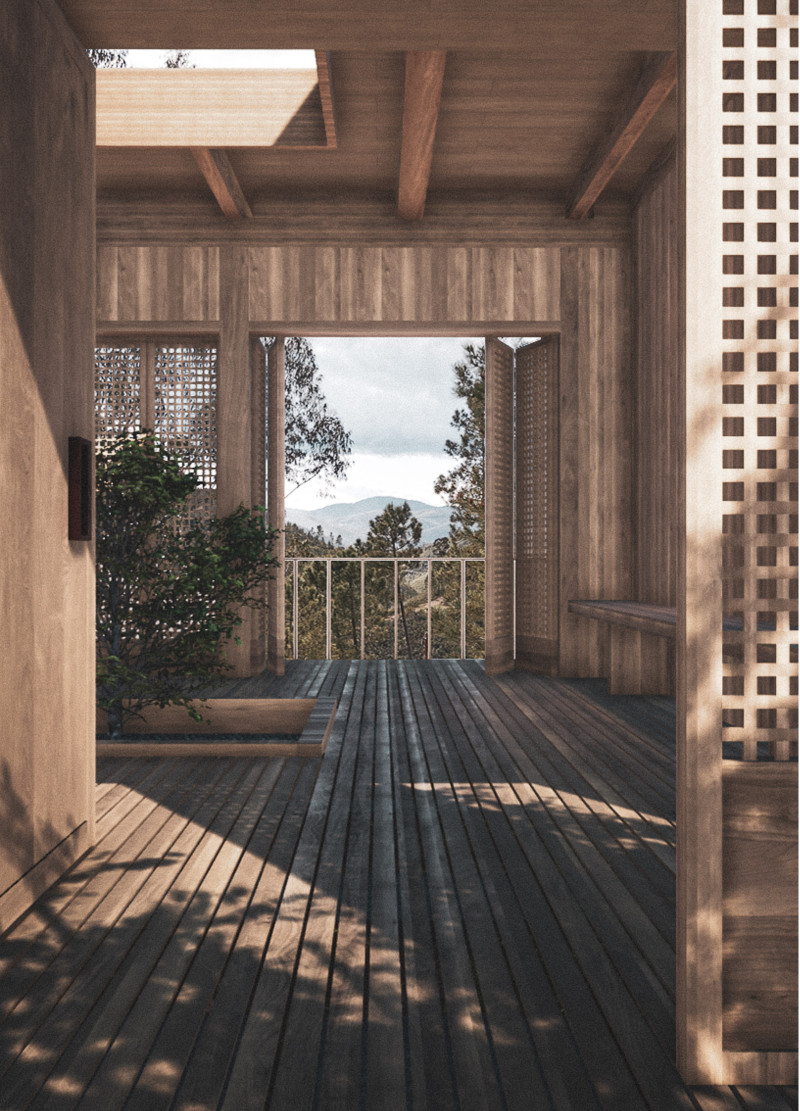5 key facts about this project
At first glance, the architecture presents a comprehensive approach that balances aesthetics with functionality. The design employs a combination of materials that reflect both modern sensibilities and environmental considerations. Reinforced concrete forms the backbone of the structure, providing the necessary support and durability while allowing for expansive open spaces. The use of large glass panels enhances transparency and connects the interior with the surrounding landscape, bathing the spaces in natural light and creating a sense of openness. Wood cladding, utilized in various sections of the project, infuses warmth and complements the natural environment, reinforcing the project's commitment to sustainability.
The layout is meticulously organized to facilitate both movement and interaction among users. Walking through the main entrance, visitors immediately experience a seamless flow of spaces designed to encourage social engagement. Key areas such as communal lounges and flexible meeting rooms are thoughtfully arranged to promote collaboration and creativity. This spatial organization not only enhances functionality but also highlights the importance of community in the building's architectural vision.
Among the unique design approaches adopted in this project is the integration of green elements. Green roofs serve as not only an aesthetic feature but also as a vital component of the building's ecological strategy, promoting biodiversity and improving energy efficiency. This choice of incorporating living systems into the architecture reflects a broader commitment to environmentally responsive design, emphasizing the importance of sustainability in modern construction.
Additionally, the project utilizes technology as a means to enhance user experience. Smart building systems are incorporated to provide energy efficiency and optimize the interaction of occupants with the space. These systems adjust lighting and temperature based on occupancy, ensuring comfort and reducing energy consumption.
Another noteworthy feature is the attention to local context and cultural significance. The design thoughtfully engages with its surroundings, drawing inspiration from local architectural styles while also addressing specific environmental conditions. This contextual responsiveness is evident in the choice of materials and the overall massing of the structure, which respects the existing urban fabric while also introducing a contemporary expression.
The project embodies a multifaceted approach that addresses current architectural trends while being grounded in practical outcomes. By bridging the gap between architectural innovation and community needs, it serves as a model for future developments. The balance of form and function within this project illustrates a deep understanding of the role architecture plays in shaping human experience and community connections.
To gain deeper insights into the architectural plans, sections, and innovative ideas that underpin this project, readers are encouraged to explore the project presentation further. The exploration of these elements will provide a comprehensive understanding of how this design operates within its environment and its potential impact on the community.


























